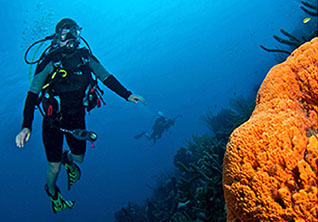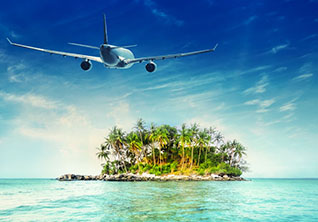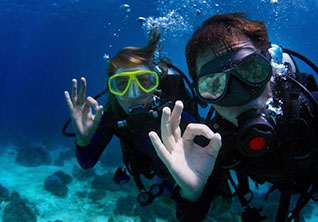Truk Lagoon: Why Dive A Wreck When You Can Dive An Entire Fleet?
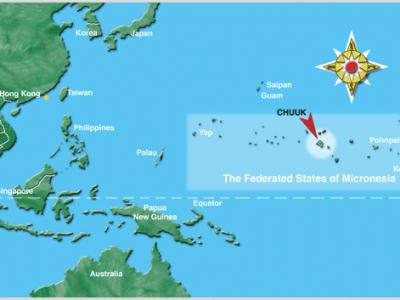
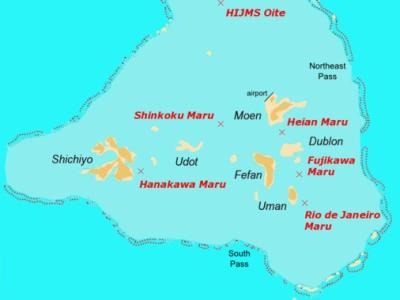
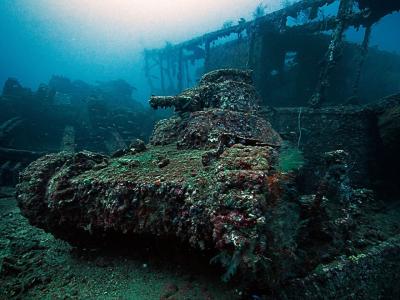
Truk Lagoon, also called Chuuk Lagoon, is not your average dive site. It was known as the “Gilbralter of the Pacific” and by the end of February 18th, 1944 became the biggest graveyard of ships in the world. Jacques Cousteau explored Truk in 1969 and in 1971 aired his documentary “The Ghost Fleet of Truk Lagoon”. Over the years many of these vessels have become coral reefs on their exposed surfaces, but in their holds where little natural light penetrates, the products and spare parts used in warfare may be found stacked the sameway they were the day the ships went down. On some ships that have been explored, items have been moved by divers such as a gas mask placed on the barrel of a coral encrusted gun or a group of plates and bowls set out as if ready to be used for a picnic. Depth charges have been removed for obvious reasons. Other items to view include a porcelain baby bath, trucks, anti-aircraft guns on decks, tanks on decks, tanks resting on tanks, sake bottles, medicine bottles, torpedoes, mines, bullets, bombs, Betty bomber parts, zero fighter parts and engines, and the skeletal remains of those that made the ultimate sacrifice for their country.
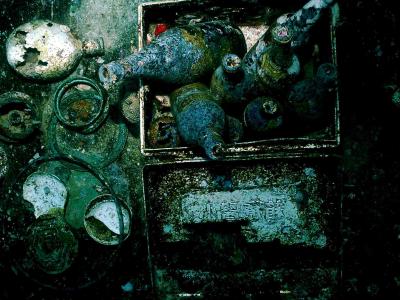
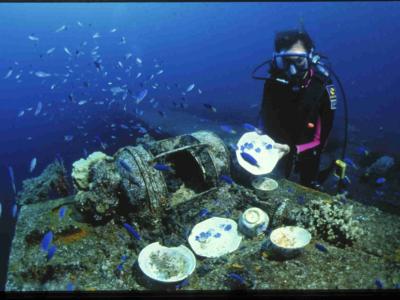
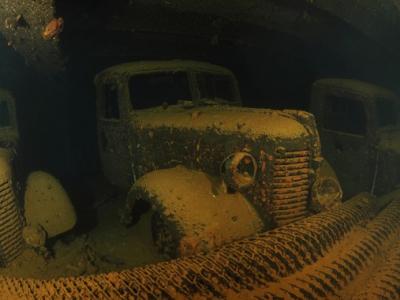
Since the only way to truely get in touch with what transpired in this now tranquil lagoon with water visibility over 50ft /17m year round is to go back in time and embrace a little history of the islands.
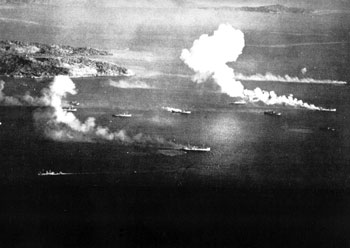
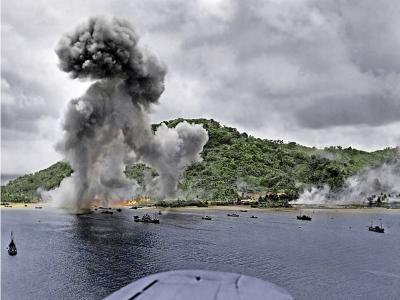
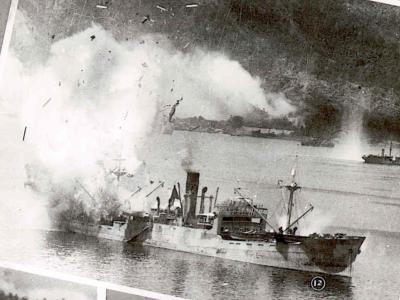
Truk Lagoon is an atol in the South Pacific about 1,000 miles NE of New Guinea and 3,300 miles SW of Hawaii. The tallest of the main seven islands is 1,500ft above sea level. Some hundred smaller islands are also found around inside and outside the atol of 140 semi-rectangular miles round. The atoll has a deep water lagoon of 800 square miles, so it is not small by any means and this attracted sailors, traders, and whalers from around the world. Alvaro de Saavedra was the first European to land here in 1528 and like any European did at the time, he ignored the natives living in Truk for some 2,000 years and claimed Truk and the surrounding Caroline Islands for Spain. That being said, nothing much happened for 300 years until Spain lost the Spanish-American War in 1898 and the U.S. gained the rights of many tropical resort like islands. Any monopoly player would have said this is a bad idea, but the U.S. sold the islands (except for Guam) to the German Empire in 1899 for 4.2 million dollars.
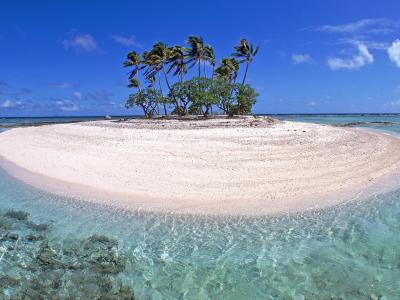
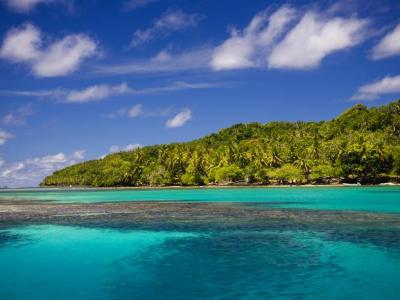
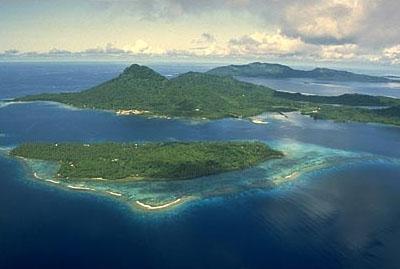
In 1914 Japan in a secret pact with Britain seized control of all Micronesia and in 1919 Imperial Japan’s control was formerly recognized by the League of Nation’s mandate. By 1920 there was an exclusion of foreign ships into Truk Lagoon and Imperial Japan somehow accidentally over looked the restrictions which prohibited fortification and colonization in Micronesia. By the 1930’s there were more Japanese colonists than natives in Truk. In 1939 the Japanese passed the Military Manpower Mobilization Law to concript labor for the empire and soon Koreans, local islanders, and 2,000 convicts from Yokohama Central Prison were conscripted to perform manual air field construction. In all, the Imperial Japanese Civil Engineering Department and Naval Construction Department had built roads, trenches bunkers, caves, five air strips, a sea plane station, torpedo boat station, a radar station, a communication center, submarine repair shops, and coastal defense gun implacements. Some eighty times bigger than Pearl Harbor, Truck Lagoon was home to battleships, aircraft carriers, cruisers, destroyers, tankers, tugboats, gun boats, cargo ships, minsweepers, submarines, and landing craft. Some 250 aircraft were also based there. By 1941 there were an estimated 100, 000 Japanese in the islands as compared to a mere 50,000 Micronesians. By August 1942 Admiral Isoroku Yamamoto located his headquarters on board the battleship Yamato in Truk and in 1943 transferred his headquarters to the sister ship Susashi. On a side note, well before the raid on Truk, Admiral Yamamoto was killed on April 18, 1943 while flying in a G4M “Betty” Bomber over the Solomon Islands. A similar “Betty” bomber is one of the wrecks resting in Truk Lagoon.
After the fall of Kwajelien Atol, Japanese intelligence determined that U.S. forces now had air superiority and so Imperial Japan withdrew the larger ships to Palau a week before the U.S. was slated to attack Truk.
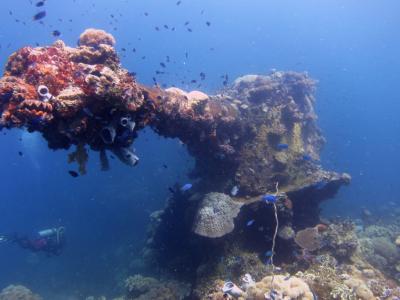
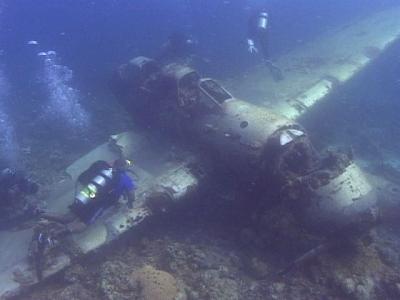
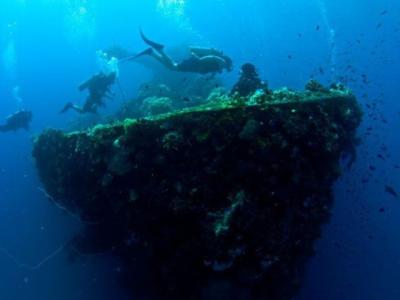
Operation Hailstone commenced on February 17th, 1944 in the early morning hours with the first wave of 72 Gruman F6F Hellcats targeting any flying Japanese planes and then those still on the ground. They were followed by TBF Avengers Torpedo Bombers and 3BD Dauntless Dive Bombers all coming from five fleet carriers, and four light carriers, and reinforced with 7 battleships, destroyers, cruisers submarines, and supply ships for a total of 60 ships and 500 planes.
By the first day 124 Japanese planes were shot down in flight and another 150 destroyed on the ground before they could even join the fight. That night radar equiped avengers pounded the islands and U.S. warships and submarines surrounded the atoll. The Japanese cruiser Agano tried to escape and was torpedoed just outside the lagoon by the submarine U.S.S Skate. The crew of the Agano, was picked up by the Destroyer Oite, and when she came back inside the lagoon to assist with anti-aircraft fire power, she was hit and sunk, and only 20 crew members from the Oite survived the attack. The former home of the Imperial Japanese combined fleet headquarters became a sunken ship graveyard in less than two days. The U.S. lost 25 planes and 40 men, 11 of which were killed on the Intrepid when it was damaged by an attack from a solo Japanese torpedo bomber thought to be enroute from Saipan or Rabaul. By the next day, February 18, twenty years of military buildup was destroyed and Truk could not assist with any reinforcement or support when the U.S. invaded Eniwetok. For the United States of America, pay back for Pearl Harbor had just been delivered.
By late April, Imperial Japan had moved almost 100 planes from Rabaul to Truk and on April 29th a second attack on Truk left 59 planes shot out of the sky and 34 destroyed on the ground. This day and a half assault also destroyed gas and oil tank farms. From this point forward 90% of the Imperial Japanese military supplies did not make it to the islands. The U.S. also began using Truk for bomber practice for Japan. The cut off Japanese soldiers on Truk were left isolated and starving until they surrendered on September 2nd, 1945.
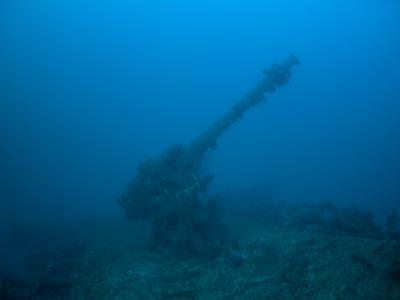
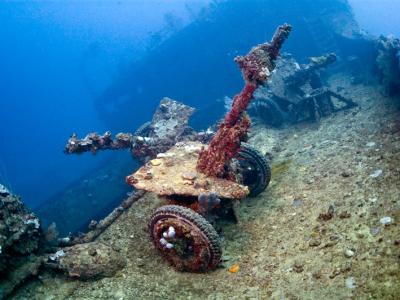
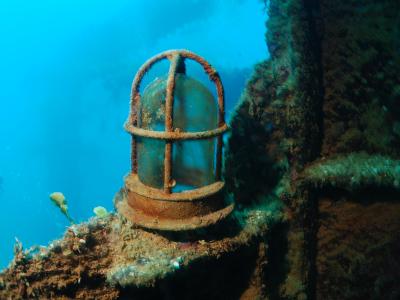
The Imperial Japanese navy ships sunk on February 17th and 18, 1944 include:
Three Japanese light cruisers: Agano, Katori, & Naka.
Four Destroyers: Oite, Fumizuki, Maikaze, & Tachikaze.
Auxiliary cruisers: Akagi Maru, Aitoku Maru, Kiyosumi Maru.
Two submarine tenders: Heian Maru, Rio de Janiero Maru.
Smaller warships and sub chasers: CH-24, Shonan Maru 15. Aircraft transport Fujikawa Maru.
32 merchant ships were also sunk in the attack. The submarine I-169 which actually sunk by accident, but played a role in the attack on Pearl Harbor was destroyed by the Imperial Japanese navy fearing the U.S. would get inside her and capture vital military information. There are still 14 unidentified wrecks and eight sunken aircraft around Truk Lagoon. The largest wreck is the Heian Maru, the San Francisco Maru is popular for its tanks on deck, the Fujikawa is known for its engine room and machine shop, and the Hanakawa has spectacular coral growth.
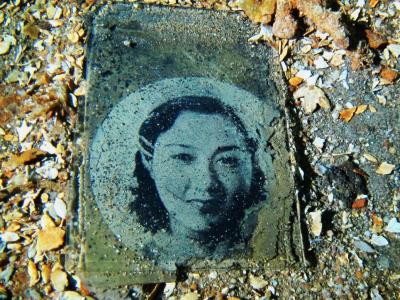
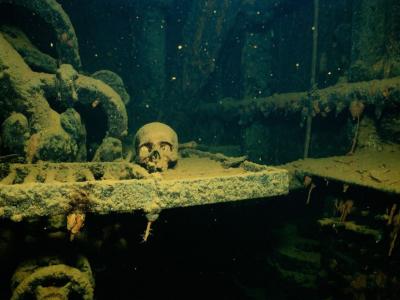
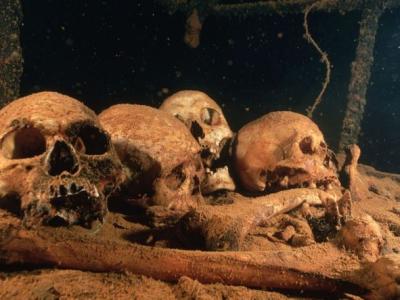
Prior to 1944 several other ships sank in and around truk lagoon, most notable, the Sapporo Maru auxillary storeship, the freighter Katsuragisan, the tugboat Ojima, and the transport ship Kikukawa Maru. We think reading Dive Truk Lagoon by Rod MacDonald is a good way to wreck your day.
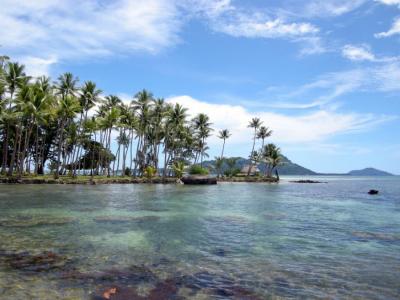
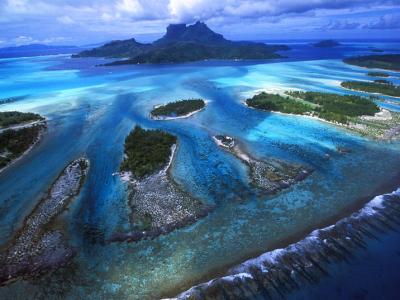
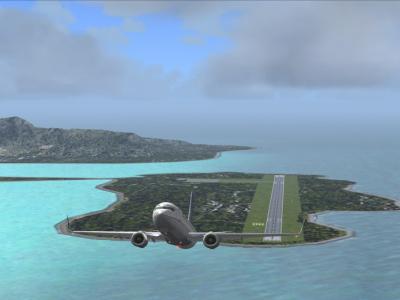
So as you can see, there are many ships to view, but many wrecks are too deep to visit unless you are tech diver certified. The liveaboard vessel SS Thorfin caters to divers using rebreathers or technical dive equipment as well as recreational divers. Meanwhile at least nine large wrecks are located at depths of 60-120ft (20-40m). The liveaboard Odyssey Adventures goes to some 15 of the large and small wrecks dotted around Truk’s waters. Many artifacts can be seen slightly above or just below the surface. The deeper you go, the more items you will see in their original, non-coral colonized, post-war preserved state. It takes several trips to tour Truk Lagoon and see the entire underwater historical museum, this one of a kind uniquely structured coral garden, and the world’s largest fleet graveyard.
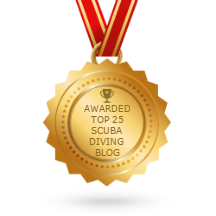
Recent Posts
- Eastern Malaysia, Sabah, Sipadan & More
- Ghost Pipefish, Pipefish, Seahorses, and Sea Dragons
- Australia Queensland and the Great Barrier Reef
- Tioman Islands, Malaysia
- The Riviera Maya
- The Peter Diving System
- The Bay Islands, Roatan, Utila, Guanaja, and more.
- The Cuttlefish; The Undisputed Master of Camouflage.
- The Maldives: A Garland of Islands in the Indian Ocean
- Frogfish, The Overlooked Camouflage Artist
Categories
- Australia
- Bahamas
- Bay Islands
- Belize
- Blue Hole
- Bonaire Diving
- Borneo
- Cayman Brac
- Cayman Islands
- Cozumel
- Curacao
- Cuttlefish
- Dive Destinations
- Dive Equipment
- Dive Liveaboards
- Dive Resorts / Properties
- Dive Travel
- Dive Travel Deals
- Diver Wellness
- Dolphins
- Dominica
- Eagle Rays
- eagle rays
- Family Travel
- Fiji
- Galapagos Islands
- Great White Shark cage diving
- Guanaja
- Honduras
- Indonesia
- Infographics
- Isla Mujeres
- Learning to Dive
- Little Cayman
- Maduro Dive Newsletter
- Malaysia
- Maldives
- Manta Rays
- Marine Life
- Mexico
- Micronesia
- Muck Diving
- Myamar
- Palau
- Papua New Guinea
- Pelagics
- Philippines
- Pinnacles
- Polynesia
- Reefs
- Riviera Maya
- Roatan
- Saba
- Sabah
- Scuba Diving
- Scuba Gear Reviews
- Scuba News/Events
- Scuba Training & Education
- Sea Legends
- sea lions
- Sea of Cortez
- Sharks
- Single Travel
- Sipadan
- Socorro Islands
- South Africa
- Specialties
- ST. Kitts
- Stingrays
- Tahiti
- Thailand
- The Bucket List
- Tobago
- Truk Lagoon (Chuuk)
- Turks and Caicos Islands
- Turtles
- Uncategorized
- Underwater Photography
- Underwater Video
- Utila
- Walls
- Whale Sharks
- Whales
- Wreck Diving
- Wrecks
- Yap
Archives
- January 2024
- April 2023
- March 2020
- March 2019
- January 2019
- November 2018
- September 2018
- July 2018
- May 2018
- March 2018
- January 2018
- October 2017
- September 2017
- June 2017
- April 2017
- February 2017
- January 2017
- October 2016
- August 2016
- July 2016
- May 2016
- March 2016
- February 2016
- January 2016
- December 2015
- August 2015
- June 2015
- April 2015
- January 2015
- November 2014
- July 2014
- April 2014
- February 2014
- December 2013
- November 2013
- October 2013
- September 2013
- August 2013
- July 2013
- June 2013
- May 2013
- April 2013
- March 2013
- February 2013
- January 2013
- December 2012
- November 2012
- October 2012
- September 2012
- August 2012
- July 2012
- June 2012
- May 2012
- April 2012


